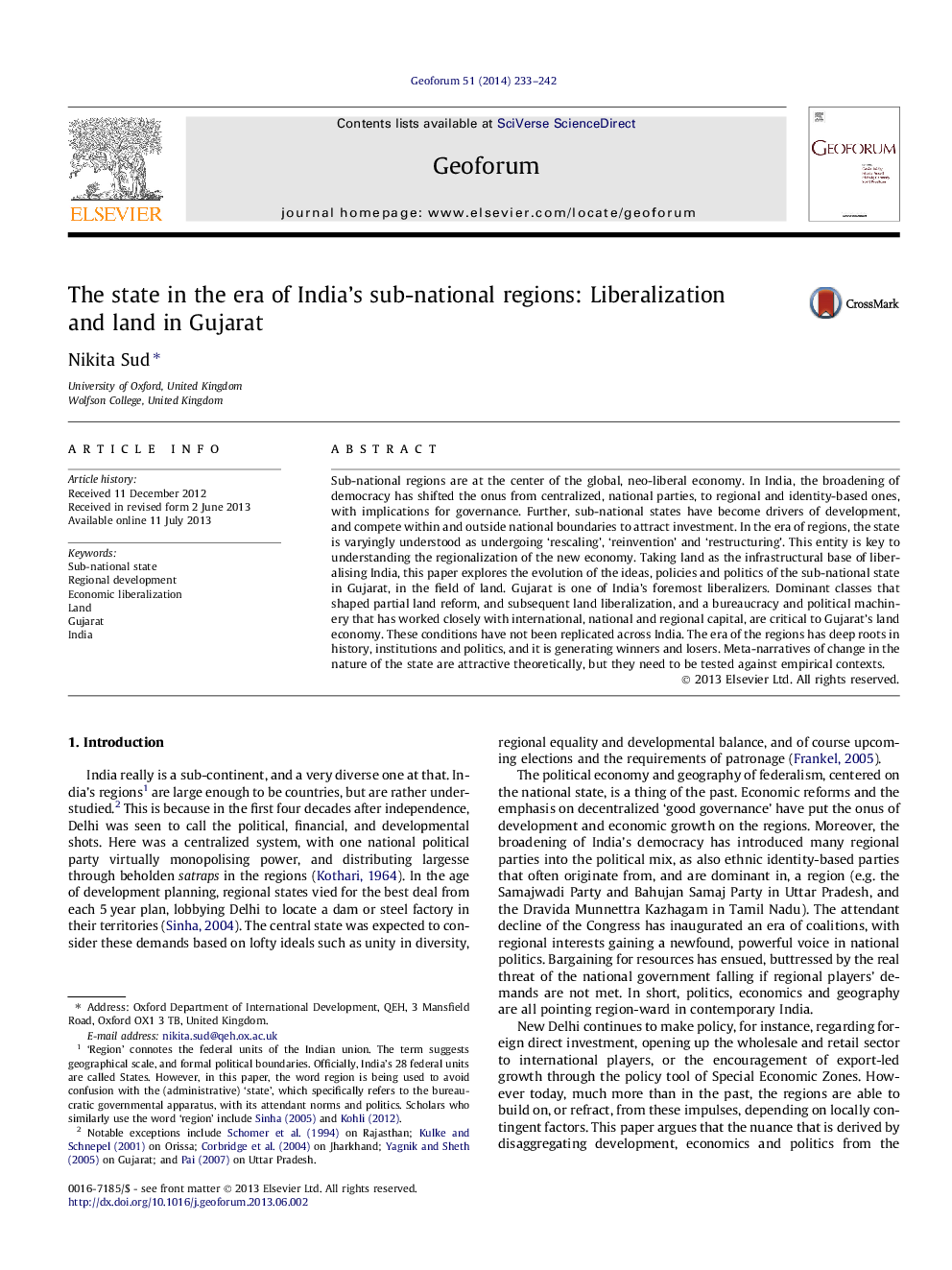| کد مقاله | کد نشریه | سال انتشار | مقاله انگلیسی | نسخه تمام متن |
|---|---|---|---|---|
| 5073916 | 1477138 | 2014 | 10 صفحه PDF | دانلود رایگان |
- Original article, based on field based qualitative research.
- Focuses India's growth story on the sub-national scale.
- Highlights trajectories of regions, based on history, institutions, and politics.
- Emphasizes the role of the sub-national state as a driver of development.
- Fine-grained story of Gujarat's land liberalization nuances theories of the state.
Sub-national regions are at the center of the global, neo-liberal economy. In India, the broadening of democracy has shifted the onus from centralized, national parties, to regional and identity-based ones, with implications for governance. Further, sub-national states have become drivers of development, and compete within and outside national boundaries to attract investment. In the era of regions, the state is varyingly understood as undergoing 'rescaling', 'reinvention' and 'restructuring'. This entity is key to understanding the regionalization of the new economy. Taking land as the infrastructural base of liberalising India, this paper explores the evolution of the ideas, policies and politics of the sub-national state in Gujarat, in the field of land. Gujarat is one of India's foremost liberalizers. Dominant classes that shaped partial land reform, and subsequent land liberalization, and a bureaucracy and political machinery that has worked closely with international, national and regional capital, are critical to Gujarat's land economy. These conditions have not been replicated across India. The era of the regions has deep roots in history, institutions and politics, and it is generating winners and losers. Meta-narratives of change in the nature of the state are attractive theoretically, but they need to be tested against empirical contexts.
Journal: Geoforum - Volume 51, January 2014, Pages 233-242
